Windows XP 60 Minute Tune-Up - Fix Sluggish Performance for Free!
Does your PC just not run as quickly as it used to? Does it take much longer than you would like to get things done? Considering purchasing a new PC just to get back that speed and responsiveness you had when you first bought this one?
Well don't give up on your old PC just yet, some cleanup and tweaking might just be all you need to get your older PC running like new again!
(Advance warning, not for the faint of heart, this article is both lengthy and detailed, any one part of this article in and of itself is useful and important to a productive windows XP experience however these tools and techniques should be used cautiously by the uninitiated!)
Often when visiting new clients their number one complaint is slow or unresponsive PC software, there are a number of tasks we will perform in order to ensure their windows XP PC is running at it's best, some of these tasks are ones these clients could be running themselves but either don't have the time or the knowledge to do so, I'll take the time today to impart that knowledge to you, so that you might be able to make better use of your time, efforts and resources.
In an attempt to help more people get the most from their windows XP PC's I've written an article below about some of the steps I take, the steps start simple and straightforward and get more complicated as you go down the list, with a strong caution many of these tasks are highly effective but also some what dangerous to the stability of your PC, and some, done incorrectly could completely render your computer useless, use caution and don't tread where you don't feel comfortable, if all else fails, call us first at ![]()

![]()
![]()

![]()
![]()
![]()
![]()
![]()
![]()
![]() (905) 366-8234
(905) 366-8234![]() , rather then after it's too late!
, rather then after it's too late!
A fine-tuned Windows XP PC can run quite fast even if it's seriously lacking in the horsepower department. Before you chuck out your PC or even decide to upgrade, try stripping some of the rust that's built-up over the years; the results may surprise you!
It is more likely that it's your windows XP operating system that's slow, not the PC itself. It's software, not hardware - you know, invisible 1s and 0s held in an electric field representing your data. Your computer is still fast, but there's a ton of stuff slowing it down. There's more 1s where there should be 0s and your PC is killing itself fighting an impossible battle to burn off this fat.
We've seen Pentium II machines from early 1998 with 256 MB of Memory run XP faster than newer Pentium IVs with double the Memory - so what gives? This article will help you figure out why your PC is running slow and outline exact steps to fix it quickly, before throwing in the towel with a format, restore, or new PC purchase.
The Culprits - What Slows Down Your PC?
Before you dive into your PC, it is absolutely critical that you determine what is slowing it down. Ignoring a bad hard drive could lead to catastrophic damage with data loss.
Lack of sufficient RAM completely limits a PC's performance. Spyware and malware could be having a circus inside your Windows - just like in 95% of other PCs connected to the internet your PC could be slow because it's infected!
There are other causes for PCs to run slow, but these are the most common:
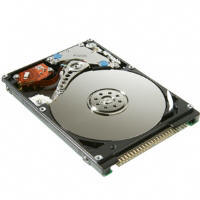
A Dying Hard Drive?
The basic symptoms of a bad hard drive are: extremely slow performance, blue screen of death error screens, system errors on startup, and strange sounds coming from your PC, especially clicking sounds. If you suspect your drive is failing, shut down your PC as soon as possible. If you use a dying hard drive for too long you might suffer complete data loss. Ensure you have an up to date backup and that it is easily accessible and call a professional like The Technology Coach before you do anything else!
Lack of sufficient RAM?
It's also possible your PC doesn't have enough Memory. The amount of RAM your PC has can be checked by hitting the Windows ÿ and Pause/Break keys at the same time. The amount is listed toward the bottom right as MB or GB of RAM.
 We've seen Windows XP run with 256 MB RAM and it is not pretty. With 512 MB, an XP machine can survive basic tasks as long as there is not a lot open at once. We consider 512MB to be the absolute tolerable minimum. The jump to 1024 MB will help speed up the PC considerably, especially if there is antivirus or anti-spyware software running in the background. Currently 1024 MB (or 1 gigabyte) seems to be the sweet spot, where adding more RAM doesn't seem to be cost effective for most users. However, Video, Audio or Photo editors can usually benefit from the jump to 2048MB (2 gigabytes).
We've seen Windows XP run with 256 MB RAM and it is not pretty. With 512 MB, an XP machine can survive basic tasks as long as there is not a lot open at once. We consider 512MB to be the absolute tolerable minimum. The jump to 1024 MB will help speed up the PC considerably, especially if there is antivirus or anti-spyware software running in the background. Currently 1024 MB (or 1 gigabyte) seems to be the sweet spot, where adding more RAM doesn't seem to be cost effective for most users. However, Video, Audio or Photo editors can usually benefit from the jump to 2048MB (2 gigabytes).
RAM is by far the least expensive upgrade you can make to gain the most performance on a windows XP computer . Seriously consider upgrading if your PC has less than 512 MB. Contact The Technology Coach for assistance in locating and installing more memory for your slow windows XP Computer
Is your PC Infected with Spyware?
 You might try to avoid spyware like a flagged minefield. But if kids, friends, or PC newbies are using your PC to browse the Internet it's very likely that your PC is infected. The basic symptoms of spyware, malware and adware are: slow performance, pop-up ads, strange error messages, extra toolbars in your browser, frequent web browser crashes, and slow or completely non-functional Internet. Completely removing spyware can be a big job. Removing 99.9% of the spyware and even missing one piece just leaves the door open for that remaining piece to invite it's spyware friends back in. For assistance with Spyware removal Contact The Technology Coach!
You might try to avoid spyware like a flagged minefield. But if kids, friends, or PC newbies are using your PC to browse the Internet it's very likely that your PC is infected. The basic symptoms of spyware, malware and adware are: slow performance, pop-up ads, strange error messages, extra toolbars in your browser, frequent web browser crashes, and slow or completely non-functional Internet. Completely removing spyware can be a big job. Removing 99.9% of the spyware and even missing one piece just leaves the door open for that remaining piece to invite it's spyware friends back in. For assistance with Spyware removal Contact The Technology Coach!
What else could it be?
If all of these other things are not the problem, your PC is probably just cluttered with junk and needs a tune-up. This article covers a quick (45 - 60 minute) tune-up for Windows XP. The basic approach: Visual effects, Add/Remove Programs, Startup folder, temp files, registry cleaning, CCleaner, services, then defragment really sums up the services we provide to all our new small business and home office clients on our first visit, try them yourself and you'll see why!
Shown below is the before and after CPU usage from a typical tune-up of this type. The PC tested here started with 42 processes using over 152 MB of memory. After the tune-up, this was dropped to 23 processes using only 63 MB of memory.
Before:
After:
To see your current CPU and memory usage, hit CTRL-ALT-DELETE and view the Performance tab. The number of processes is listed in the bottom-left corner.
Step 1: Turn off the fancy graphics
The visual effects, that is animations, shadows, and extra Windows XP polished interface, eat up CPU and memory (especially on older PCs). Hit the Windows and Pause/Break keys or right-click on My Computer and choose Properties. Navigate to the Advanced tab, then click the first Settings box under Performance.
PC's older than 5 years should be set to Adjust for Best Performance, newer PC's can use custom and adjust the settings manually by un-checking all the boxes except for:
-
Smooth edges of screen fonts
-
Smooth-scroll list boxes
-
Use drop shadows for icon labels on the desktop
-
Use visual styles on windows and buttons
If you plan to use Common tasks such as the built-in Windows Explorer CD Burning Utility, you may want to leave Use common tasks in folders enabled. Read through this list and determine what else you may want. Test the settings using the Apply button before deciding you're OK with changes.
Turn off your background image (wallpaper) and you'll notice the desktop comes up slightly faster. It also (depending on the detail of the image) will give you more free memory. This can be accessed by right clicking the Desktop, choosing Properties, Desktop, and looking under Background.
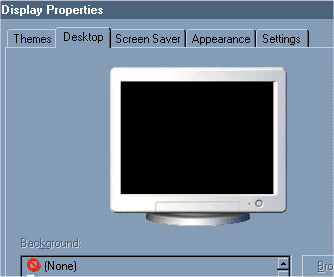
Sure, it looks plain. But it helps a bit with resources.
Step 2: Remove Extra Programs
In general, the more programs you have installed, the more memory they are using. This isn't the case with all programs, but it's still good practice to remove programs you don't use. You'll save hard drive space and even system memory if the programs load at Windows startup.
Add/Remove Programs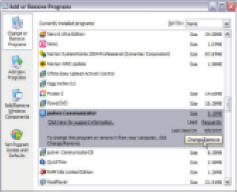
Enter the Control Panel (Start, Control Panel or Settings/Control Panel) and go to the Add/Remove Programs applet. The list of programs you'll see rarely contains anything essential to the PC's operation. Most of the programs were installed by a user and can be removed if they are not required - just don't remove Microsoft Office and so-on if you plan to use it!
Go through this list and remove all the programs you're positive you don't use or need. Anything you're unsure of can be researched on Google before you uninstall it.
The most common troublesome entries we uninstall are: AOL, AOL AntiSpyware, Yahoo Toolbar, Wintools, Viewpoint Media Player, Freedom, Speedway, Weatherbug and various "Deals", which are almost always spyware.
Additionally we'll remove programs installed for one-time use or that we thought we'd use but never did. If you don't use AOL feel free to remove any reference you see. Don't remove any drivers unless the hardware has been removed from the PC. If your antivirus or anti-spyware program are expired and out of date, you may as well uninstall them since they are taking tons of resources and newer, free alternatives are available online. Removing some items here will require a reboot.
Step 3: Clean-up the Registry and Temporary Files
 The best tool we've found to clean up temporary files and the registry is CCleaner. Overall this is one of the best tweaking programs out and can definitely help you easily fix issues with your system. Download and install this program, making sure not to turn on extra features you won't use like the Yahoo Toolbar it tries to install.
The best tool we've found to clean up temporary files and the registry is CCleaner. Overall this is one of the best tweaking programs out and can definitely help you easily fix issues with your system. Download and install this program, making sure not to turn on extra features you won't use like the Yahoo Toolbar it tries to install.
Run the program and uncheck any specific items you don't want it to remove. If you require it, go through the Advanced Options and check any entries that you require to fix issues with your PC (such as Window Size/Location if one is resized awkwardly). Then click Run Cleaner at the bottom right. After several seconds it should complete, giving a detailed report on resources recovered.
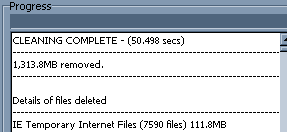
In this case, 1.3 GB of space was recovered!
CCleaner also has some other cool features. Click the Issues button on the left and it'll find problems in the Registry. It might be a good idea to quickly browse the list to determine what kind of problems were found. Most of these can be fixed safely using the Fix Selected Issues button. Additionally the Tools tab can be used to uninstall more programs, delete broken uninstall links, and turn off additional Startup programs.
Step 4: Removing Programs that Run at Startup
Removing extra programs that run when Windows starts will greatly increase its performance. These programs usually load in the system tray at the bottom right, but sometimes you won't see the programs at all. Note that these programs typically do not need to run at startup to function! From the Start menu, choose All Programs, then right click Startup and choose Explore. Delete any repeat entries or shortcuts you are sure you can do without (we'd remove the stuff relating to Microsoft Office, Real Player, Quicktime, etc.). Very rarely do you need any startup shortcuts in this folder. Repeat the process right clicking on the same place and choosing Explore All Users this time if you have multiple user accounts.
Now open CCleaner as mentioned above, navigate to the Tools option to the left, then click Startup. This tool cannot break your PC, but at worst limit its functionality. As long as you are only turning off startup programs here, your PC can recover from damn near anything you turn off. The tool tells you where in the registry to find the keys that it's going to remove and the program path it executes.

You may find lots of old useless programs lurking here.
Most 3rd party program can be removed from this list unless it involves an all-in-one printer or the PC is a notebook (in which case you'll want to keep support for the touchpad and power management).
We recommend removing "Save", "Weather", "Deals", etc. as these are generally Ad-ware. Turn off anything relating to Real Player (keyword being "Real"), Quicktime (such as qttask), and findfast. There are online lists available detailing all the startup files such as this one.
If you're scared to turn something off, check to confirm if it's required. Each program here is DIRECTLY RELATED to the system's performance, particularly its free memory and CPU.
This program allows you to manually edit even more startup items including Toolbars, Browser Help Objects, and some Services. Make sure to remove references to uninstalled programs or expired antivirus/anti-spyware applications.
Step 5: Clean your Desktop and Start Menu
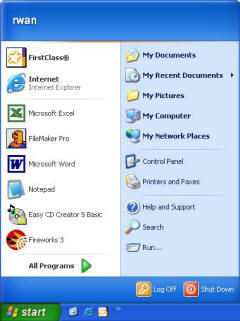 This would be a great time to clean-up some other key areas to the PC's response time and zippiness. I'd start by deleting extra icons and downloaded files on the Desktop (visible quickly by hitting the Windows and D keys simultaneously). Delete lots of stuff here! These icons may not seem significant but they're taking some memory. Also, navigating a cluttered desktop is damn near impossible. For now at least create subfolders such as Downloads, Text Documents, and so-on and store the majority of files in these. A clean desktop will probably increase your productivity even if it doesn't help the PC's performance much.
This would be a great time to clean-up some other key areas to the PC's response time and zippiness. I'd start by deleting extra icons and downloaded files on the Desktop (visible quickly by hitting the Windows and D keys simultaneously). Delete lots of stuff here! These icons may not seem significant but they're taking some memory. Also, navigating a cluttered desktop is damn near impossible. For now at least create subfolders such as Downloads, Text Documents, and so-on and store the majority of files in these. A clean desktop will probably increase your productivity even if it doesn't help the PC's performance much.
This would also be a good time to clean up your Start menu. Open it up, find shortcuts that you don't use, right click the entries and choose Delete. You can also remove shortcuts to programs that you only run when you open a data file. For example, the shortcut to Quicktime is probably unnecessary, as you'll open this program automatically when clicking Quicktime movies.
Wrap it Up
These steps take about 45-60 minutes to complete once you've learned the process. As a habit we tend to run basic tune-ups on just about every PC we touch and the results are always worthwhile.
Keep an eye on system resources (CTRL-ALT-DELETE) and choose the Performance tab as you install new programs to determine if more tuning is necessary. Don't forget to update major system drivers (especially video, sound, and chipset) and run Windows Update regularly for new patches and fixes.
You'll find some great tips on automating many of these cleanup tasks in an article we published last month titled Automating system maintenance tasks in Windows XP.
If you have any questions or concerns about any of the steps above it's always better to err on the side of caution, The Technology Coach is always available to help with these tweaks and many more if these just aren't enough to get things running smoothly we can always offer assistance and advice on purchasing a new computer that will suit your business needs best!



No comments:
Post a Comment